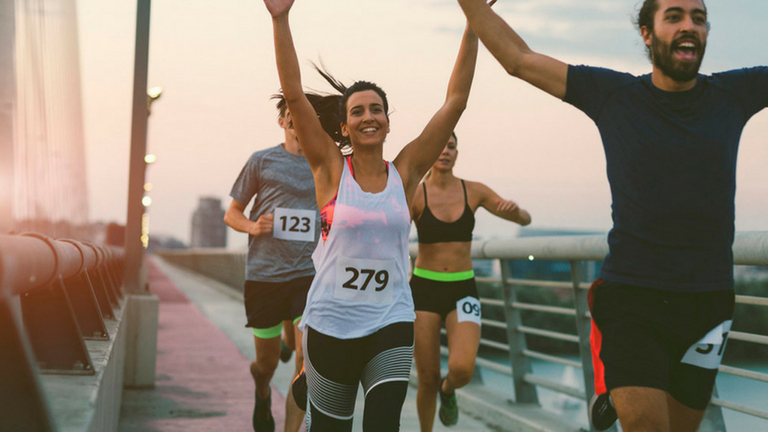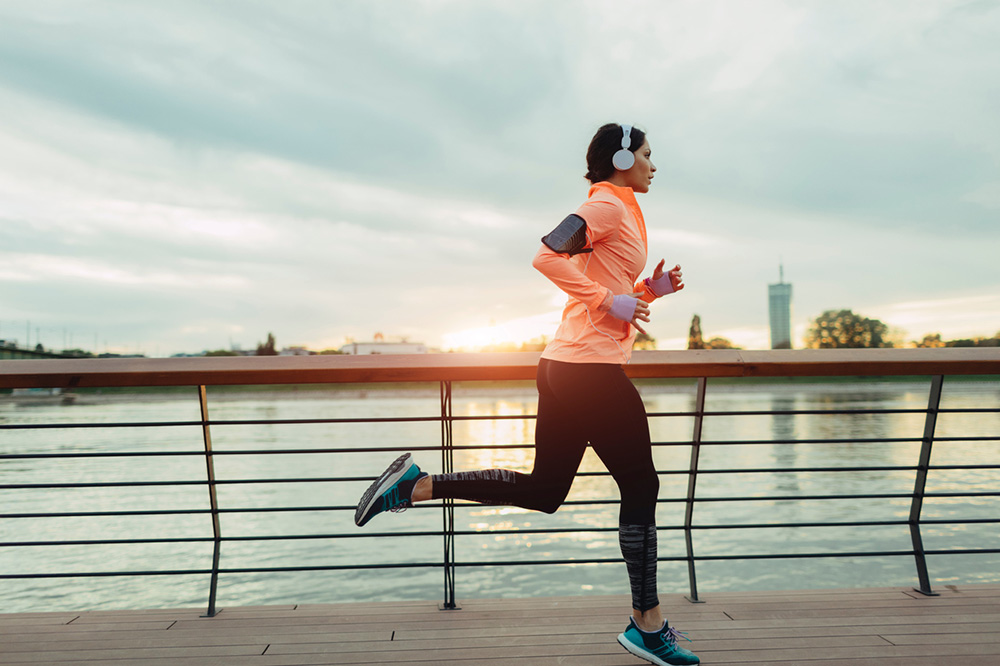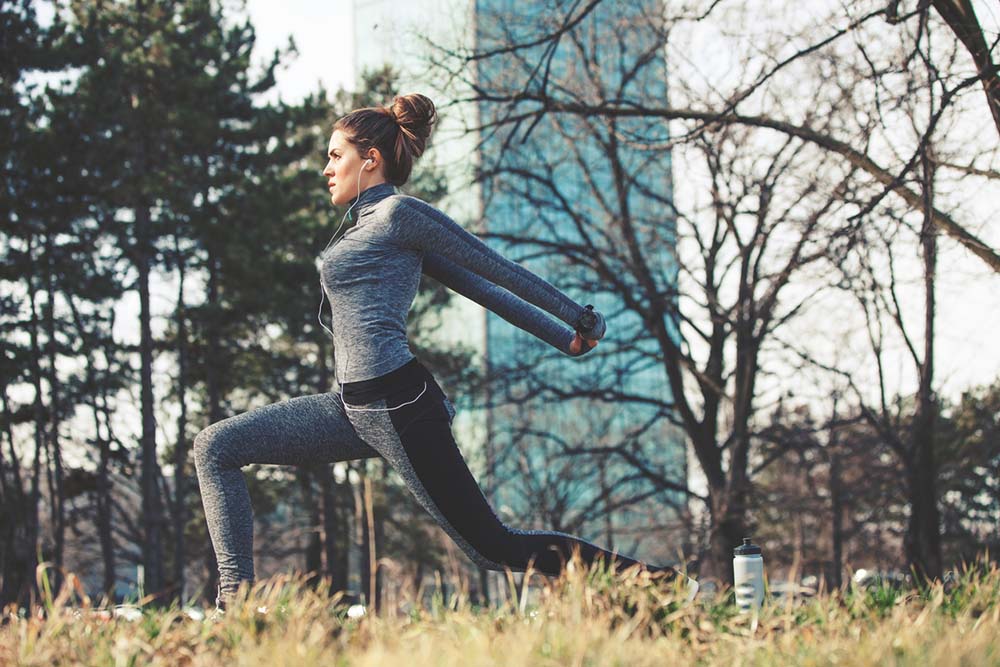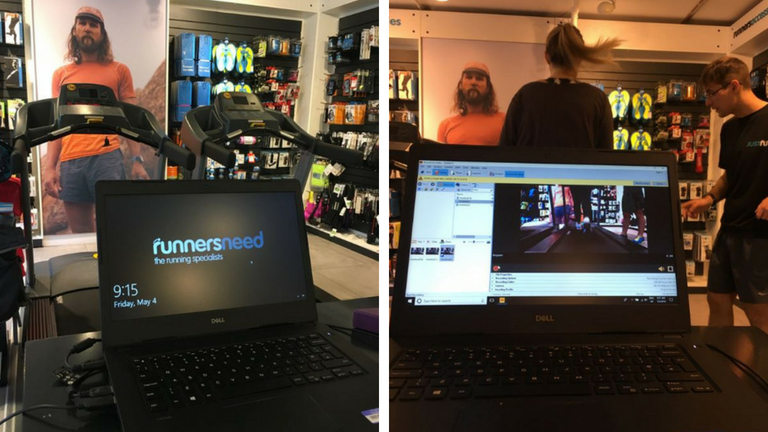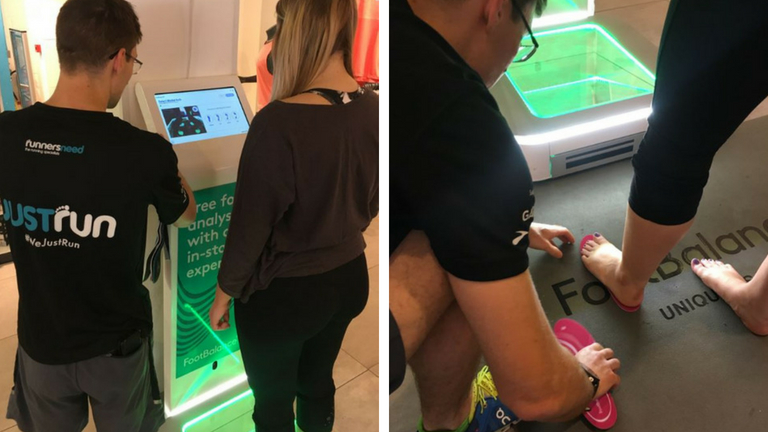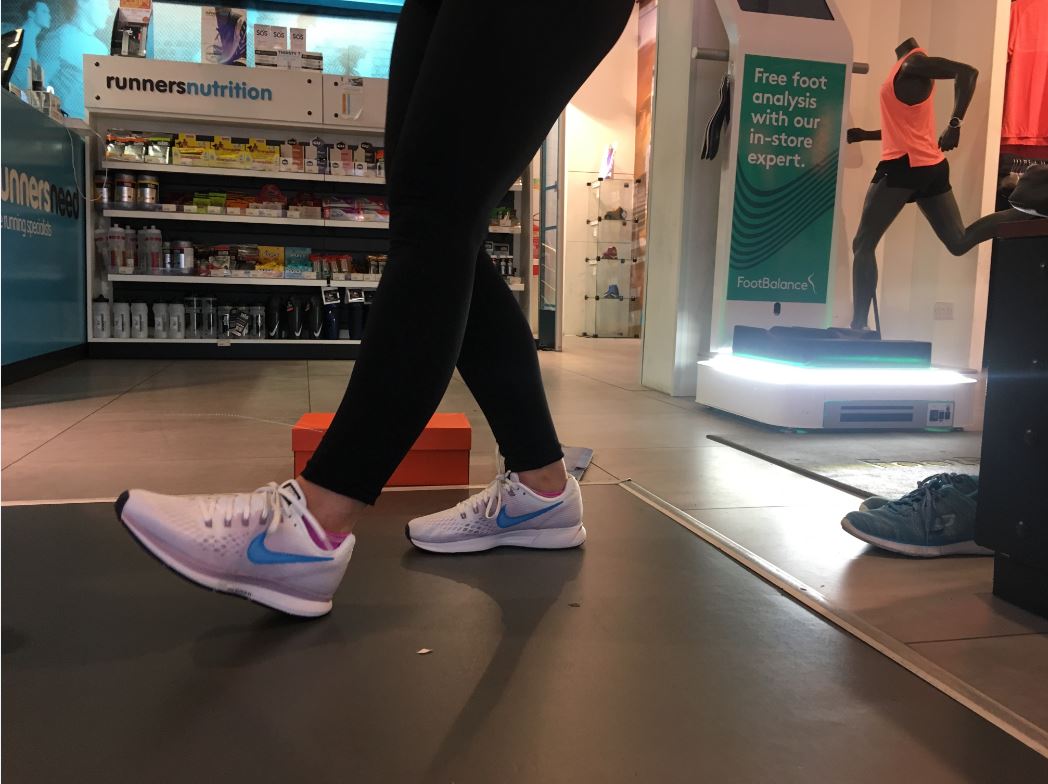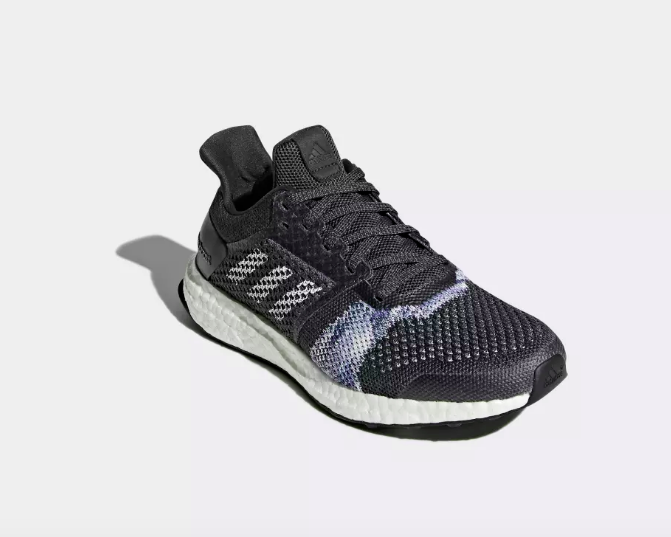Wish you could be a runner this Global Running Day? Healthista writer and ‘beginner runner’ Olivia Hartland-Robbins spent five weeks training for a 5K run. For week one of her Running for Beginners diary she brings you seven steps to getting started
I decided once and for all, it’s time I became a runner. So often when I’m out walking my dogs, I see people running along effortlessly with their headphones and their lean physiques. I’m so incredibly jealous of those people who say, ‘just popping our for a run’ or ‘I’m going for a run on my lunch-break’.
How can they make it look so easy? How can they go for a run during their lunch-break and barely look like they’ve been for a walk, let alone a run?
‘Not a natural runner’ is how I myself and others would probably describe me. My family aren’t the sporty type, so unless I was forced to run at school, or if and when I attempt to mount the treadmill at the gym, running is not something I would choose to do – but it is something I SO wish I could do. Whenever I do manage a slight run or jog, I feel great after, feeling like I’ve worked hard and done something to increase my dwindling fitness levels.
I needed a goal to strive towards though. I sat down and Googled ‘charity races in London’. I came across ‘Run Regents Park’ for Macmillan Cancer Support, that was just over five weeks away.
Then it came to me, I’ll train for the next 5 weeks and run a 5K race, 5 weeks to 5K – preferably without stopping. And as I’m a writer for Healthista, I can regale you with the journey every week.
From the start I wasn’t too bothered with timings or beating a ‘personal best’, I just wanted to be able to run a significant distance – not easily but not painfully either. Here’s how I got on…
First things first, speak to the experts
Before running out of the front door full steam ahead and starting my training, it seemed wise to first have an idea of what I was letting myself in for. I spoke to celebrity personal trainer and Macmillan support Georgie Okell who ran Run Regents Park in 2017.
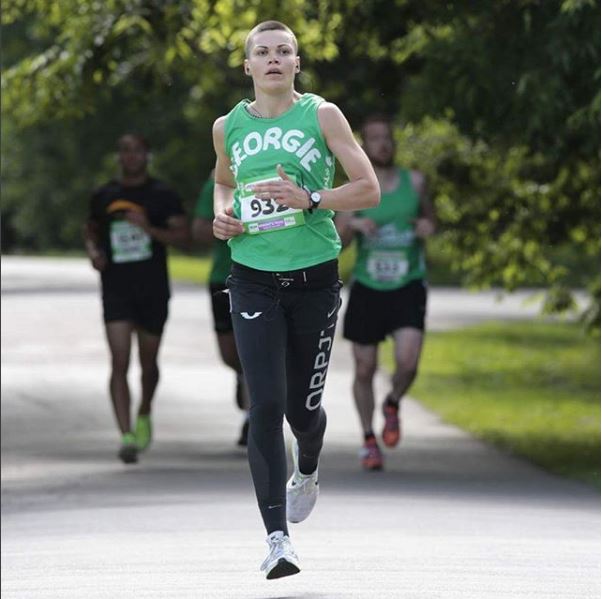
Speaking to Georgie I was mostly interested in asking for her advice on injury prevention especially for beginner runners like myself. Suffering from shin splints whilst I was at university, they’ve never really gone away and can creep up on me a few minutes or sometimes even a few seconds after I’ve started running.
In fact shin splints are one of the main reasons I talk myself out of running time and time again. So, I wanted to know how and if it is possible to train for a run without getting those dreaded shin splints I hate so much. I’ve lost count of how many times I’ve used the dramatic phrase ‘shin splints are ruining my life.’
So, here are seven steps to get you safely started on your running.
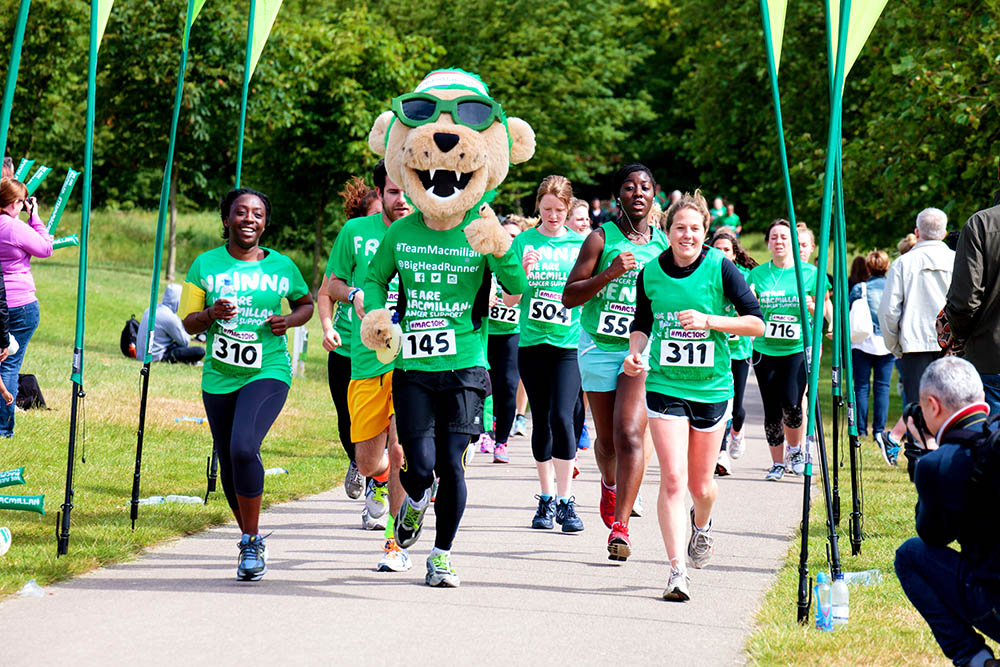
Running for beginners step #1: Embrace the run/walk thing
‘A lot of people say to me that they can’t run or that they aren’t natural runners,’ says Georgie. ‘If you haven’t run before or never really tried don’t just belt out the front door at a pace you can’t maintain,’ explains Georgie. ‘You’re just going to destroy your body – well destroying your body may be a bit dramatic but you’ll definitely end up hurting yourself.’
Georgie recommends that you should only be doing three runs a week
Make a plan that’s full of small and achievable goals. Georgie recommends that you should only be doing three runs a week, not running every day as it’s simply not possible.
‘Do one longer run for however long you can manage, that you add five minutes to every week, the day after this long run, do a recovery run, just ten to 15 minutes of nice and gentle jogging or running. Then for your third run, make it an interval training type of run with sprints, hill running, speed work or pushing and pulling your pace back on the treadmill.’
Georgie also suggests that saying things to yourself such as ‘ok I’ll sprint to that lamppost and then pull it back’, creates smaller goals which are the basic rules for successful training.
It’s all about a gradual increase in fitness. ‘The walking and running approach is great – I often say to people for every ten minutes running or jogging walk for two minutes’ says Georgie.
Georgie mentioned that ‘the NHS app, Couch to 5K is brilliant and a lot of people recommend it.’ It incorporates walking and running, until you build up your fitness levels and can start to run for longer time periods. Couch to 5K was the app I was thinking about using for my 5K training, now that Georgie has recommended it, I think it’s the one I’ll be testing- and it’s free.
Running for beginners step #2 Keep a training diary
When Georgie first started running only a few years ago, the one thing that really made a difference for her and what kept her running plans on track was keeping a training diary.
‘Every time I went to the gym or took a class I would write exactly what I did and how I felt before and after the workout or run,’ Georgie explains. ‘Looking back on your diary six weeks later you can see that ‘oh wow I can run that same distance way easier and quicker now’, you don’t realise the progress you’re making day after day, week on week, so keep a record of it.’
Running for beginners step #3 Headphones aren’t always helpful
I love listening to music while I run, I can’t stand hearing myself so out of breath, it not only makes me feel like I’m unfit and doing a rubbish job but I also find it very distracting. The music blocks out the outside noise and I can feel myself (trying) to run to the beat.
However, Georgie suggests that when training as a beginner, headphones might not always be a good idea. ‘You need to listen to your breathing’ says Georgie. ‘As a beginner, you should also be listening to how hard you’re pounding the ground, if you are absolutely pounding the ground, then that’s too much impact, listen and be lighter on your feet.’
‘If you’re breathing so hard it sounds painful – pull it back, if you’re hitting the ground so hard it sounds like it could hurt your joints, it probably is – so pull it back’ advises Georgie.
Running for beginners step #4 Include non-impact cardio
I was relieved to find out that even Georgie used to suffer from shin splints herself: ‘I got such bad shin splints when I was training for my first marathon, that I ended up walking that marathon on crutches, since then I’ve run five marathons and never had them since,’ Georgie revealed. So there’s definitely hope for me yet.
Georgie revealed that incorporating yoga and non-impact cardio such as cycling and swimming into her training has helped protect her from injury.
‘It’s about completing the miles in training but not putting unnecessary strain in the legs,’ she says.
So that Pilates class you look forward to is just as important as that interval run you dread.
Running for beginners step #5 Stretching before AND after
‘Another thing I make very clear, is before you start your run it’s important to do some dynamic warm up stretching,’ says Georgie.
‘Swing your leg from side to side, back and forth, swing your arms around, do some side to side squats, anything to get that body moving and warming up those muscles, that’s what will help prevent injury.
‘Don’t start with static held stretching,’ Georgie warns. ‘Doing static stretching on cold muscles is dangerous, only stretch this way when your muscles are warm and relaxed, after you’ve trained, or after a warm up.’
We all know the uncomfortable feeling of those oh-so-annoying DOMS (delayed onset muscle soreness). When getting used to a particular type of exercise, the use of different muscles results in stiffness. I want to know, do we wait for the stiff muscles to heal or do we carry on through the discomfort?
‘If you’re a beginner, workout for no more than two days back to back before taking a rest day’
Not sure what DOMS are? Georgie explains: ‘when we work out, we make tiny tears in our muscles, these muscles then reset, develop, grow and strengthen but we have to allow recovery time for that process to happen. If you’re a beginner, workout for for no more than two days back to back before taking that all important rest day.’
Georgie also tells me that, ‘DOMS can last for a couple of days, I suggest that everyone should have at least two rest days a week. If you’re feeling sluggish and tired because of DOMS or just feeling knackered in general, don’t force it, rest, recovery and stretching is so important.
To lessen the likeliness of DOMS, its important to stretch out the muscles that have been used. I’ve always found that using a foam roller, although sometimes uncomfortable, can really help to ease muscle soreness. ‘Foam rollers are brilliant, get one and use it, they can be painful but so so good for muscle soreness,’ says Georgie.
So if the pain isn’t too great and you’re feeling up to it, it turns out you can still work out with slightly achy muscles, as long as you warm up properly and stretch at the end.
Running for beginners step #6 Don’t compare yourself
I explained to Georgie that I was planning on joining some Barry’s Bootcamp fitness classes to help me get 5K ready. ‘Classes like Barry’s and where I teach at 1Rebel, that involve high intensity classes are brilliant for fitness levels and motivation,’ says Georgie.
However, comparing yourself to other people on the treadmill or bike next to you, who have probably been training a lot longer than you have, is not a great idea.
‘We are all coming in at different levels for different reasons, just find the workout that feels good for you’ says Georgie. ‘Don’t feel in competition to the person next to you, they are there for different reasons.’
Running for beginners step #7 Get the right trainers for you
Last but certainly not least – choosing and running in the correct footwear was a minefield that confused me.
There is one thing I do have to admit, when I first became interested in health and fitness at university was also when my shin splint problems began.
Looking back I definitely didn’t invest in the right pair of trainers. Despite being interested in health and fitness I was still a student and was far more interested in spending money on alcohol and McDonalds – oops.
Many people, Georgie included, have recommended ‘gait analysis’, which assesses how how we walk and run on video.
All Runners Need stores offer free gait analysis as part of the comprehensive fitting process. Staff will analyse the way in which your foot hits the treadmill, looking to see if your foot rolls inwards, doesn’t roll inwards enough or whether your foot stays neutral. Combined with understanding how far and often you run they can help us you choose the right pair of shoes.
Having the right pair of trainers also helps with our running ‘form’. Georgie explained that what also helped her combat injury was when she became serious about her running form.
Retraining myself to land on my toes and bounce on the balls of my feet changed everything
‘Retraining myself to land on my toes and bounce on the balls of my feet, and not landing really heavily on your heels changed everything for me, the impact that comes from landing on your heels will ricochet up through your legs’ explains Georgie.
Georgie continued, ‘in geeky runner world there’s a lot of debate over the heel strike or the toe strike, if you land more naturally and comfortably on your heel, that’s fine but just listen to that impact you’re making with the ground. If you’re slamming your heel into the ground or onto the treadmill, heavy running on your heels is not good for shin splints.’
Another feature Runners Need provide which can help to improve your running form is a free Footbalance ‘foot assessment’ which identifies your foot alignment.
Footbalance insoles are moulded to the unique shape of your feet to support them into a neutral position, aiding a balanced stance and correct alignment.
I tested about four or five different pairs of trainers, testing a couple of them out on the treadmill. Playing the video back in the store I could see a big difference in the way my ankles would turn in or out as I ran.
‘Get a pair of trainers that are half a size too big for you,’ says Georgie. ‘Our feet expand as we run.’
In the end after lots of umming and ahring, I chose a pair of Adidas Ultraboost shoes. They felt light on my feet but also supportive. The gait analysis showed that in these shoes my ankles remained neutral and didn’t roll inwards or outwards like they did in other pairs of trainers. For more information on why these trainers are oh-so-brill for running click here.
One last tip – learn to love your run
Find out what time of day works best for you. Do you prefer running in the evening when it’s dark? Do you prefer running through the city streets or through a park? Do you run better in the morning when there is nobody around? Finding a route that you like is key to training successfully.
If you too want to join #TeamMacmillan and take part in one of their fundraising challenges including hikes, outdoor swims and runs to raise money for Macmillan Cancer Support. Register for an event at www.macmillan.org.uk/challenge.
Celebrity Personal Trainer Georgie Okell took part in Run Regent’s Park to raise vital money for people living with cancer. Find your Macmillan fundraising challenge at macmillan.org.uk/Challenge
Related Healthista Content:
8 best running shoes for women
The 5-minute running warm-up to keep injuries at bay
The hiking holiday the Queen loves – we try Munro bagging
7 secrets of women who get fitter with age
Like this article? Sign up to our newsletter to get more articles like this delivered straight to your inbox.



